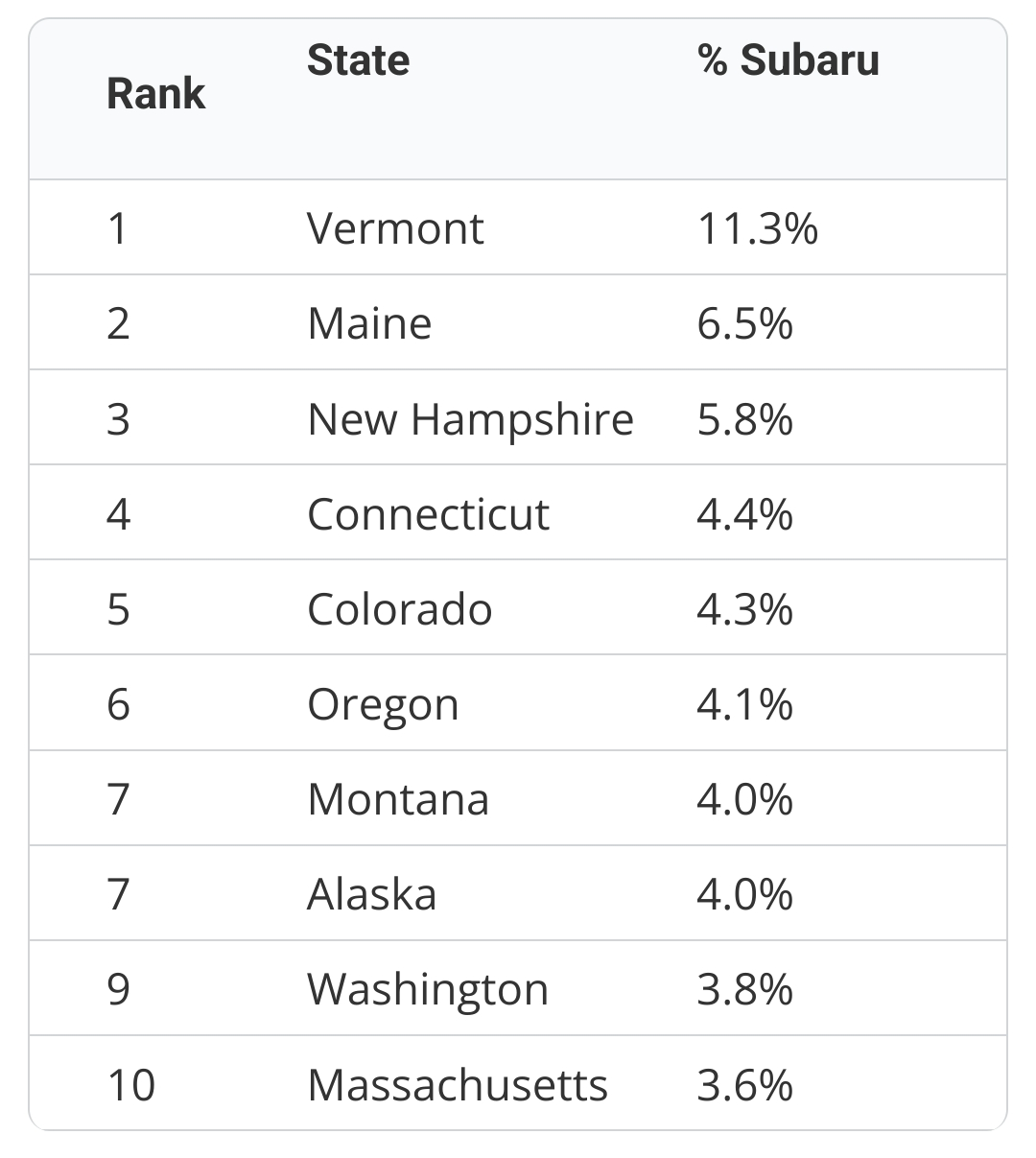I am potentially looking at buying a new car in next coming months. I’m looking at the Nissan rogue because my current car is Nissan and I’ve been pleased with it for the past 12 years and I would like the extra room an suv has. The only thing I don’t like is that the majority of suvs are AWD. Nissan does make the rogue in FWD but I was only able to find 1 in my nearby dealerships. So it seems that if I want an suv I’m stuck with AWD or I have to stick with a sedan. For context, my first and current car is a 2012 Nissan versa.
Tldr: do the benefits of AWD and having an suv outweigh the downside of having to replace every tire if you get a flat in one with AWD. Or should I just try and stick with FWD?
EDIT: thank you for all the responses. It is very clear now that I do not need AWD and will stick with FWD. And apparently, I need to look into different cars makers. I have had good luck with my Nissan but according to comments Nissan isn’t a good company anymore.
EDIT 2: I didn’t realize that there are 2 different types of AWD. There’s full and reactive. Technically, the car I have now is AWD because it does divert power to the back wheels if it detects them slipping. My apologies for not fully understanding the terminology before making the post. My original post was directed towards full AWD, when there is power to all wheels all the time. Thanks for the help !
Most people don’t need AWD. Most people who think they need it are wrong, and they could easily live without it. I say this having lived in several snowy places, including rural mountains, owning cars with and without AWD.
Regardless of AWD, if you buy an SUV, don’t think that you can ignore the weather. It’s very common for SUV drivers to believe that their car is suitable for the snowstorm, drive at high speeds, and get stuck in the ditch. Please don’t be that guy.
I had all kinds of cars in my life, probably the best car i ever owned to drive in the snow was a Peugeot 106 gti. Skinny winter tires and the weight or lack of it was absolutely king in the snow. I went on ski trips where all kinds of cars were stuck and i never had any problem at all. The “best” car on paper i ever had for the snow was a jeep grand Cherokee. That thing was more scary than good in the snow. I see a lot of people crash their AWD cars, because they don’t know the difference between AWD and 4x4.
There is a noticeable difference in EVs with AWD vs FWD, because the drive wheels all have independent motors. More motors= more power. As other commenters said, the main other consideration is if you have snow.
We’ve really enjoyed our Hyundai Ioniq 5 crossover SUV. It has a ton of leg room (I’m 6’2" and can fully stretch out my legs), 300 miles of range, and more acceleration than any car I’ve ever owned. The cost of charging at home is about 70% less than we were paying for gas, plus there’s almost no maintenance needed (e.g. there’s no oil to change). With super chargers on road trips Hyundai and Kia EVs can charge from 10%-80% in about 15 mins for slightly less than the cost of gas.
also regenerative charging causes brake pads to wear much more slowly. to the point that sometimes the rotors start to rust badly because the actual brakes get used so little.
I’ve been casually looking at the ioniqs - is anything in the interior intrusive? I have a problem with EVs having massive screens or way way too many buttons.
Can’t really give you a reply, but I suggest you to just go to a dealership and take whatever ioniq you are most interested in for a test drive. I sometimes to that just for fun, even though I’m not even actually interested in buying one lol. tbf, I get that sometimes dealerships are quite far to go to, but having an hour or two with a car to drive around really gives you a good idea of how you like it.
The Ioniqs have much smaller screens than the EV industry average, and many more physical buttons than industry average. The only time I really touch the touch screen is related to the Android Auto GPS/Google Maps, or very rarely I’m fiddling with a setting in my driveway.
IMO, AWD is overhyped. I’ve driven in snowy, hilly terrain in Canada for 16+ years, and the number of times I’ve been truly, call for help stuck is 2. Always FWD and manual.
AWD is more expensive to purchase and maintain, burns more gas and tires, and doesn’t convey that many benefits. The ppl who really need AWD are generally the ones who actually need 4x4, and if you actually need 4x4 it’s for a good reason. Knowing how to drive your car well is more valuable.
Case in point: I once drove up a rocky mountain ski hill on an icy day. There was a rise where everyone was getting stuck, including AWD and FWD drivers. Ppl were helping each other by pushing the cars to get them up/started. I was there for 40 mins, not a single AWD car outdid a FWD car. Trucks with low gear 4x4 made it, with effort.
TLDR: IMO, AWD is more marketing hype than value that benefits the dealership more than the buyer. Save yourself the coin and get good winter tires instead. Stick with the Versa.
Love,
A fellow Versa driver
I grew up in a mountain town and have only ever had FWD cars, so I’m totally comfortable driving in snow and ice. I think I’ve only gotten stuck once. Thanks for the feedback, I’ll continue my search!
What kind of climate do you live in? AWD is most useful when trying to climb slippery hills or help with acceleration from zero on slippery surfaces.
As for replacing a tire, now a days more tire shops can grind down a fresh tire to match the old ones. It’s wasteful for sure, but not as bad as replacing all fours.
No need to “grind down” a tire. The differentials will balance out the difference in torque.
On an AWD car I thought having mismatched tires like that can damage your suspension though?
I live in colorado. But I’ve driven in snow and ice with fwd for years now and I’m used to it.
Oh I didn’t know about that. That is pretty wasteful but I guess better than buying all new tires.
Colorado is probably the second biggest market for Subaru after the North East and Quebec, that certainly should tell you something ;)
Subarus cost more in Colorado than anywhere else. It’s often far more cost effective to drive to fly to Kansas and buy them there. I would put money on Colorado having the highest Subaru sales.
Kansas isn’t even on the top 10, and even if they were equal to a Colorado they wouldn’t be first.

Quebec marketshare sits at around 5.2%, placing it forth.
TBF I’m surprised Massachusetts is so low, I’d like to see a brake down with Boston/Camberville
My point is Subarus aren’t in demand in Kansas so a lot of Coloradans go there to buy it for a lot less. Your data supports that.
Yeah, AWD has a small MPG penalty and one-time purchase cost. If you live in a cold climate or drive off-road it is incredibly important to make sure you don’t get stuck. If you live in a warm climate and keep it on the road, probably would opt for FWD.
I also have had very, very few issues with tires. I don’t tend to drive on upright nails or hit curbs at high speed, so at least for me the advantage of only needing to replace two at a time vs four (or get a new one ground down to match) is almost a non-thought.
I come from the land of ice and snow, and AWD allows my car to go.
Something something midnight sun and doing an vehicle based mountain run.I did just fine with just RWD until I moved somewhere more mountainous. If the climate was drier or warmer, it wouldn’t matter as much.
AWD often is the difference of if you have to put on chains to keep going upwards or not. Downwards you’ll need them anyway.
Never had to use chains? Not getting any snow? It’s not very useful then.
I’ll be upfront: IMO, hatchbacks > SUVs. That said, a number of manufacturers make “uplifted” versions of their sedans/hatchbacks, such as the Mazda CX-3 which is the bigger version of the Mazda 3 sedan/hatchback. The same applies for the Mazda CX-5 which is a bigger Mazda 5 (not available in USA).
But directly answering the question, AWD is typically an extra weight penalty (200-300 lbs, 90-130 kg) with attendant fuel economy impact (usually around 1 MPG lower), a bit more maintenance due to having to keep the wheels equally worn, and in rare cases, gets you into trouble where a 2WD car wouldn’t.
To elaborate on that last point, in snowy weather, an AWD car can get moving better than a 2WD car, but the number of braked wheels is unchanged. So some people end up getting stuck further along on an impassable road or down in a ditch in their AWD car, in places where tow trucks have to wait for the weather to calm down. Meanwhile, the 2WD car would have already detoured when first encountering the unplowed snow.
If you don’t have snow, then you’re not really getting much of the benefits of AWD but have all the downsides and it costs more. AWD doesn’t shine in the rain either, since moving faster is rarely desirable in wet conditions.
If you do have snow, snow tires on a FWD is superior to all-season tires on a AWD or 4WD. This is because snow tires improve braking as well as acceleration in packed or slippery snow, for all cars.
So for light winters or places where it snows so badly that driving at all is ill-advised, a FWD with snow tires may be perfectly suitable. Since you’ve been happy with your Nissan Versa, I assume you don’t have the steep, slippery driveway which would tip the equation in favor of AWD/4WD.
TL;DR: it depends, but go AWD only if you need it.
I’d also like to make a point that it seems a lot of people with AWD in my area miss.
If the road is solid ice, not snow, AWD isn’t going to help you much at all.
I live in a sunny climate (California), so I’m genuinely curious: would the solution to icy roads be winter tires? And does winter tire == snow tire?
I understand studded tires are also an option, but I think their use in this state is heavily curtailed or outright prohibited because of the damage they inflict on the road surface.
Pretty sure the CX-3 is actually a Mazda 2, and the Mazda CX-5 is on the same platform as the 3, just enlarged a bit.
Now that I think about it, you might be right. The Mazda 5 is a minivan, and a lifted version of that would be some sort of #vanLyfe vehicle, whereas the CX-5 is a crossover SUV with five doors.
But surely the CX-5 can’t be the Mazda 2 or an uplifted version of it, since the 2 is (was?) a three door vehicle, no?
There are Mazda 5’s for sale near where I live in the US. Where do you live in the US that they aren’t available?
I should have clarified that the Mazda 5 is no longer in production. I’ve seen them from time to time here in California.
Ahh ok, that makes more sense. To be fair though, I rarely saw any Subarus when I lived down south, but once I moved out west they are pretty much all over. So it’s not beyond the realm of having different distributions of cars in different areas.
hatchbacks
Yeah but then you’re driving a station wagon.
The station wagon is the pinnacle of passenger car design!
True, and I don’t see a problem. :)
Well isn’t the Cybertruck technically a ute? So you’ve got that option…
Sure, if a poptart is technically a burrito or if a bowl of cereal with milk is technically a soup
No, not like that. According to Wikipedia:
Traditionally, the term referred to vehicles built on passenger car chassis and with the cargo tray integrated with the passenger body (coupé utility vehicles). However, present-day usage of the term “ute” in Australia and New Zealand has expanded to include any vehicle with an open cargo area at the rear, which would be called a pickup truck in other countries.
If you search for “cybertruck ute” you’ll find many publications from Australia and New Zealand calling it that, but I’m talking about the narrower first definition. It’s hard to say whether or not the Cybertruck chassis is a “passenger car” chassis because it is unique, but the cargo tray of the Cybertruck is in fact integrated with the passenger body. (Pickup trucks according to the American definition have a gap in the body between the cabin and the truck bed, and the Cybertruck does not.) You can argue that the Cybertruck is a pickup truck in the American sense since it claims to have a carrying capacity of 2,500 pounds (definitely more than utes generally do, if you trust that number) but it does look like a ute.
The Cybertruck owner’s manual reveals you can carry up to 1,310 pounds in the bed, 441 in the frunk, and 220 in the under-bed storage compartment. The remaining 529 pounds must go in the cab.
Fuck yeah you are. Volvo XC70 rules.
With AWD I’d be more concerned with the fuel consumption.
Going to add to the climate argument, but thrown in a personal realization. I used to only buy rwd manual sporty cars but put snow tires on them in the winter. This was fine until I moved to a location that rains 9 months per year.
It was then I realized heavy torque, rwd was miserable here regardless of the tire choice. I’ve been buying AWD since. But it took me basically a decade to figure that out.
FWIW I still put snow tires on in the Winter, but I ski.
Hmm, I never had any issues with rain when driving my RWD 328i although it is undrivable even in light snow. I used to have a 4WD truck to go with it but since I’ve had to get rid of the truck (nowhere to park it) I just stay home when it snows.
I don’t think I’d drive an SUV at all if you were concerned with cost or handling, but IMO it depends on what you need: Modern traction control with good all terrain tires can handle extremely well in snow or rain - AWD isn’t necessary.
That said, my current daily driver is an AWD manual Subaru sedan and I have to admit: It corners better and is just a bit more resistant to losing control and a little faster in regaining control. If cost is not a concern, go with an AWD sedan especially if you drive in adverse conditions a lot.
If money is tight, stick with your FWD sedan and make sure you have quality all season tires as well as keeping your brakes and related systems in good condition - this would likely be more than adequate in any reasonable conditions especially if you are already a good driver (and if not, it’s never too late to learn).
well firstly don’t get a rogue. their transmissions are known to blow up at ~60k. ours just went at 115k
What year? Not saying new ones don’t break, but they don’t deserve the same reputation as the 2012 generation.
2016, so that’s the gen after
08-13 is S35, 14-20 is T32, then 20+ is T33
According to independent Rogue owners, the 2008-2013 and 2018 model years should be avoided at all costs. The 2008-2013 Rogue SUVs have prevailing transmission and acceleration issues. The 2014-2016 model years also have air conditioning issues alongside transmission issues. The 2018 model year is the only one that seems not to have transmission issues, but it has serious brake issues.
The model years with the least amount of complaints are the Nissan Rogue 2017, 2019, 2020, and 2021 models. We recommend sticking to these model years if you can manage it.
so it seems the newer ones might be better, but issues could have just not surfaced yet.
Do you regularly drive off road (not dirt roads, off road) or are you climbing mountains in the middle of snow storms? If not then you’re better off sticking with FWD.
Since you said you live in Colorado I’d just get a pair of winter tires and call it a day. Just remember, AWD is only good for acceleration, it won’t help you stop any quicker which is far more important in slick conditions. Good tires will do far more for you than AWD ever will.
Possibly not relevant to your use case, but one point that I haven’t seen mentioned yet is that for many SUVs that are available in both FWD and AWD, the tow rating will be significantly higher for the AWD version (like 5000lbs vs 3500lbs for FWD in the case of the Toyota Highlander and Honda Pilot)
If you live where it snows
HOLY SHIT ABSOLUTELY.
If not, meh.
I think AWD is widely unnecessary for most people in most climates. It is just an unnecessary feature to sell you a more expensive car.
I have lived in snowier climates my whole life and have also driven 2WD vehicles the entire time. I have only gotten stuck once, and I know that for a fact because I remember it being surprising that it had never happened before. You really don’t need it if you just drive carefully when conditions are suboptimal.
AWD gives you a false sense of invincibility as well. It’s important to keep in mind that “all wheel drive” does not mean better stopping. If you’re going to stop, more wheels with power doesn’t help. And in terms of dangerous situations, it’s usually the lack of stopping that’s the problem, not the lack of going.
There are also issues with fuel efficiency to consider. AWD vehicles generally get lower fuel efficiency compared to 2WD versions of the same car.
Overall, no, you really shouldn’t get AWD unless you really need the feature.
People always think 4wd will help, when for most people it will just help them get stuck deeper











